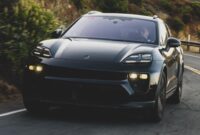As the European car market continues to change (thanks to the Tesla boom and the arrival of Chinese brands) a lot has happened to the traditional segment leaders. Europe is by definition a very competitive market with high safety/emissions standards.
It is the third largest in the world, after China and the United States, and second in the adoption of electric vehicles. But who has won and who has lost in the last 20 years?
Big Brands Getting Smaller And Smaller?
Between 2003 and 2023, one of the most important moments in the European automotive market was the shift in brand dominance. The region has traditionally been led by seven major automakers: Fiat from Italy; Citroen, Peugeot, and Renault from France; Volkswagen and Opel from Germany, and Ford from the UK.

In 2003 these seven brands (Opel including Vauxhall) controlled almost 58 percent of new car registrations in Europe (considering 29 markets). Their placement in their respective home markets has allowed them to occupy a relatively strong position compared to Japanese and Korean brands.
For example, market share in their home markets ranged from 10 percent of Opel in Germany to 27 percent of Renault in France. While these figures were significantly lower than those of the 1990s, they were satisfying because at that time Korean brands had not yet taken off and Japanese brands were trying to win over European consumers.

And Then Came Suvs
This started to change with the SUV boom, ushered in by the first-generation Nissan Qashqai. Meanwhile, Hyundai and Kia opened plants in the Czech Republic and Slovakia, producing competitive cars that have met the taste of local motorists.
The result? In 2013 the Big-7 accounted for almost 49 percent of volume in Europe, down 9 points from a decade earlier. Between 2003 and 2013, the market share lost by six of these brands varied between 0.9 points for Fiat and 4 percentage points for Renault. The only exception was Volkswagen, which increased its market share from 9.8 percent in 2003 to 12.6 percent in 2013.

This year, in June, the situation for these brands was even worse. Fiat, Citroen, Opel/Vauxhall, Ford, and Peugeot hit their lowest level in 20 years. Renault placed second among the lowest market shares, after gaining 0.2 points from the full-year 2022, when it had recorded an all-time low.
On the other hand, Volkswagen managed to increase its market share, or at least maintain it. With a share of 10.6 percent in the first half of 2023, it lost 2 points compared to 2013 but gained 0.8 points compared to 2003. The Dieselgate scandal was certainly offset by high-quality cars and the ability to introduce products in the right segments at the right time.
Who Won?
In addition to the small gain the German manufacturer recorded, the big winners over the past 20 years have been German premium brands, Toyota, Hyundai, Kia, and, most recently, Tesla. All of them have something that the big European brands don’t have: greater flexibility.
This allows them to offer fresh products on a quicker scale that better fit the latest consumer needs. At the same time, most of them were less exposed to the European crisis than there were between 2011 and 2014, and many have used their strong global presence to save costs.
Will their struggling colleagues take note?
The author of the article, Felipe Munoz, is an Automotive Industry Specialist at JATO Dynamics.



